#minecraft speculative biology
Explore tagged Tumblr posts
Text
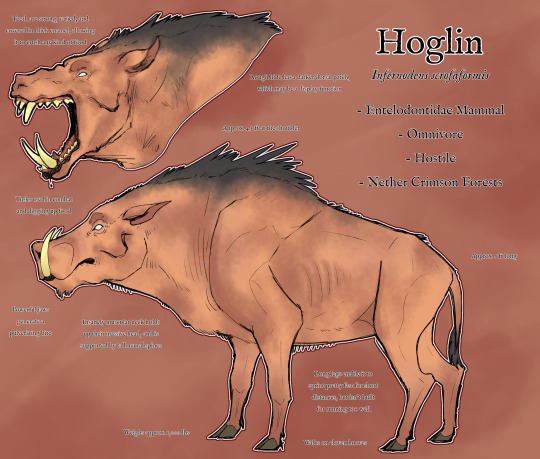
i forgot to post this quite some time ago, but here’s my concept for a Minecraft Entelodontid Hoglin! honestly, i absolutely adore Entelodontids, and i love drawing them. couldn’t miss a chance!
here’s a short scientific explanation for those of you who would like to know more:
commonly referred to as “the pigs from hell”, the Entelodonts are some of the largest animals to have ever walked on cloven hooves. they lived in North America and Eurasia, about 37.2-15.97 million years ago, and there are currently about 6-7 known genuses, with dozens more species. their diet is still debated, and they are thought to have been opportunistic omnivores that ate anything they could, as there’s evidence of them eating both meat (including bones) and plants. their heads are absolutely massive, their jaws were incredibly powerful, and they were very muscular and almost hunch-backed in appearance. however, despite their nickname of the “hell pigs”, their closest living relatives are actually thought to be whales and hippos at the moment!
i couldn’t resist some speculative species stuff lol. enjoy!
#my art#digital art#digital illustration#paleoart#drawing#sketch#speculative biology#minecraft#hoglin#minecraft speculative biology#entelodont#paleontology
69 notes
·
View notes
Text
Giant Arthropods
Silverfish, Endermite, Bees, and more!

Shown above are some of the most well known and studied of the giant arthropods;
The Dungeon Silverfish (often just called a ‘silverfish’ despite the fact it is neither a true silverfish or a silver fish): A large predatory insect notable for their elongated bodies, habit to dwell in underground End dungeon locations, and their recorded habit of attacking in swarms. These insects are actually a kind of beetle, though living underground and growing to such massive sizes has reduced the need for wings and they’re secondarily wingless. While a single silverfish often will prey on smaller insects or mammals like rodents, they will attempt to hunt larger prey and in swarms can overwhelm a player.
The Endermite (also sometimes called an End Mite or Enderman Mite): While this species of massive mite (a type of arachnid related to scorpions, spiders, and ticks) is much rarer to actually encounter, as they are native to the End rather than the Overworld or Nether, they occasionally manage to fall through dimensional tears crated by enderpearl usage into the Overworld. While they are not venomous or known to swarm, they are highly aggressive and will attack if they feel their space is being threatened. They are more so scavengers/opportunistic feeders.
The Titan Bee (the largest species of bee that can currently be found in the Overworld): A generally peaceful species of massive bee similar in appearance to the more common and smaller carpenter bee. This species can often be found in large, open habitats, traveling from flower to flower as they collect food for their hives, which often are settled within oak or birch trees growing along the edge of forests. They are very fuzzy and will aggressively defend their hives from perceived threats, their massive size and subsquentially large venom sacs can cause nausea, dizziness, and sometimes fatal allergic reactions. In massive swarms they can kill even kill a player, though because of their massive size, they thankfully aren’t the fastest flyers and usually can be avoided. This being said, they are a high interest to those that enjoy honey and bee-keeping, and with the proper methods in place, keeping them is not difficult.
The Giant Bee (the second largest bee species in the overworld, much less common than their larger relative): Having a body plan similar to that of a bumble bee, this large species is commonly mistaken for young workers of the Titan Bee, however, unlike its larger relative, this species is almost exclusive found in forested biomes. Their smaller size helps them better maneuver in such areas but while much smaller, these bees are more prone to an aggressive response to disturbance of their hive. They often cause painful stings that can cause burning/itchy sensations or possibly more life threatening allergic reactions. Despite this, they are likewise prized for their honey and the fact that they are a lot easier for beginner or novice bee-keepers to manage than the larger Titan Bee, which can be more picky or selective in the hives they will accept.

While much more rarely talked about, there are a lot more giant species of arthropod, these are some of the more commonly discussed or encountered. Note this covers only a small proportion of the expansive types of arthropods one may find out in the world.
The Titan-Killer (this parasitoid wasp preys on the larva of the Titan bee, thus the name): This wasp will sneak into the hives of the Titan bee, piercing either cocooned bees and/or larva with its elongated ovipositor, laying its eggs on the unlucky individual. When the wasp’s eggs hatch, they will eat the developing bee/bee larva alive, pupating in the hive cell its host was inside, and emerge as new adults after a period of development. They share a striped pattern with the bees and will even mimic the bees scent pheromones to deceive any workers that do come across them while inside the hive. They can be an issue for developing hives but otherwise are of no threat to players or most other mobs.
The Giant-Killer (this related parasitoid wasp specializes in preying upon the Giant Bee rather than the Titan Bee): With a similar lifestyle to the Titan-Killer, this wasp is much smaller and mostly relies on avoiding the adult bees and sneaking into the hive in order to similar inject vulnerable developing bees/bee larva with its eggs. The eggs hatch, consume the bee, pupate in the cell, and leave the hive. They can be a bit more tricky to deal with due to their more skittish nature though they are likewise harmless to players and other mobs.
The Goliath Firefly (a very rarely seen species, they once were rumored to be found in the swamps and mangrove forests, but their numbers have been greatly reduced to near mythical status): These fireflies are massive beetles with very distinct sexual dimorphism, the females being nearly twice the size of the smaller males with underdeveloped wings incapable of flight. The females elytra (the hardened forewings of beetles) are visible in adulthood but completely vestigial. The males can be spotted in flight looking for the light signals produced by the ground dwelling female, their smaller size and functional wings giving them better mobility than the usually stationary female.
The Enderian Firefly (A species from the End, one of the few large arthropods found there besides the Endermite, a couple ground beetles, and several large crickets): These fireflies act behaviorally very familiarly to their Overworld cousin, however rather than spending their time in leaf litter, they live along the chorus fruit forests. The females, which are notable for their armored appearance and complete lack of wings (vestigial or functional) are adapt climbers that will work their way up the chorus fruit trees to better signal to the smaller, flying males. The males of this species are notable for having a design like that of an eye of ender along their elytra, though whether this may indicate selective breeding for this feature by the ancient ender societies that used to exist within the End pre-societal collapse, or is merely coincidental, this is not well known. These fireflies, while more populous than their Overworld relative are still very rarely encountered.
The Harvest Termite (there are several more castes not shown in the image, however the solider and worker are the mostly commonly seen of this species and thus the selected representatives for the species): A semi-arid dwelling termite species notable for their large size and curious ‘moon’ like head coloration along the head. They act and behave much like their smaller cousins, though their size can make them a pesky species to deal with, particularly when they bite. While their bites are generally more irritating and painful than deadly, a group of them can cause significant injury.
The Shear-Jawed Ant (Similarly to the Harvest Termite, this ant species has several castes but the main ones showcased here are of the solider and worker castes): One of several massive ant species, this desert species is notable for the mandibles found on the solider caste as well as the spines ridge along the back of its exoskeleton. The jaws in particular appear similar to shears with a more hooked and serrated edge, made for cutting off flesh from carcasses or unfortunate prey, they can also cause severe bites. These ants are mainly nocturnal and can come in conflict with players when unknowingly setting up camp near one of their nests, the workers and soldiers travel long distances for food and resources. It is thought that many of those lost in the desert and never seen again were dealt with by a hungry swarm of these ants. Though recorded deaths caused by these ants have yet to be confirmed.
The Eyed Roach (one of several large roaches, they are one of the most recognizable for the pattern on their pronotum, the shield-like structure that often hides the head from overview): A peridomestic species often found near or in villages along the Savannah plains or semi-arid habitat, they feed on anything and everything though are mostly harmless save for the possibility of mechanical transmission of disease. Elsewise they very rarely will be out during the day and are incredibly skittish and quick despite their wingless nature and size.

The above image showcases the largest known arthropods in both the overworld and nether dimension, those of the massive spiders and centipedes.
The Common Wolf-Eater Spider (also known simply as ‘spiders’ by most players due to their reputation): These massive spiders are known ravenous predators that have been recorded catching and killing anything from wolves, sheep, cattle, players, etc. They can be found almost anywhere above ground across differing climates and habitat types, though thankfully, they are restricted to the Overworld. They are nonvenomous, but their massive fangs can still cause great damage. They are best dealt with in well-lit areas or during the day as they almost become ‘docile’ in well lighted conditions, most likely because their prey can better sense and spot them and thus its easier to save their energy for when they have a greater advantage. They are thankfully mostly solitary though if a group senses blood or an injured entity, they will gather together to tackle the possible prey.
The Cave-Dwelling Wolf-Eater Spider (also known simply as ‘cave spiders’ by players due to their reputation): These large spiders are nearly two times smaller than their larger above ground relative, though this does not make them less dangerous. Infact, these vigorous spiders are known to active live in massive groups/colonies and hunt coordinately. They also are notable for having massive fangs that inject a venom that causes illness, vertigo, drop in blood pressure, etc. Some players have even been shown to go into cardiac arrest or organ failure if struck by a large enough group. While they are rarer to encounter, they can be highly deadly and persistent, particularly considering the fact that with their somewhat smaller size, places and holes that might keep one safe from a ‘common spider’ will not keep you save from this species.
The Birch Spider (also known as the Forested Spider or the ‘knuckle-head spider’ due to the habit of them accidentally dropping on player’s heads from above): Exclusively found in the birch forests in the Overworld, this spider is the much smaller and less deadly relative of the ‘cave’ and ‘common’ spiders. They also, unlike the fore-mentioned two, are web-builders rather than pursuit predators. They often prey upon large and small flying insects that get stuck in their webs along with small rodents and reptiles. Their venom can cause irritation but rarely triggers much else than a sore spot where bitten.
The ‘Cave-Crawler’ (aka Hell’s Centipede, one of the very rare, yet highly adapted, giant Nether arthopods): This massive ambush predators mostly feeds on unfortunate striders, lone pigmen, and young hoglins that come across their hidden burrows carved into netherrack walls. They usually keep themselves hidden away in these burrows until they sense approaching entities and struck, inflicting a venomous bite before retreating into their burrow. The bite will often start to feel itchy and irritated before growing numb as a paralysis agent works through the body, eventually leading to organ failure, coma, and eventually death. These giant centipedes will then follow the scent trail of their injured prey and drag the body back to feed on in their burrows. They have a heavy armor that is nearly impossible to pierce with even the toughest of swords though their softer underbellies are more vulnerable. They can however be scared off with bright lights and strong scents like mint or citrus as the strong smells disorientate them. They are rarely encountered or rarely discussed because of the dangers in study them. The Oakworm (aka the Overworld Mega-Centipede due to its unusual size): This centipede species is larger a scavenger and opportunistic hunter, wandering about and eating what it comes across. They, unlike the Hell’s Centipede, a distant relative, will not attack organism larger than themselves, preferring to stay hidden under moist, cool logs in dense forests during the day and emerging at night to feed. They were originally mistaken for a massive species of worm, thus their odd name in reference.
The Hero’s Stickbug (aka the walking sword): A highly camouflaged, elusive herbivore from the Overworld, this species while massive, often stays out of sight as much as possible. They usually live in dense forest canopies, feeding on fresh growth.
And there we have some of our many Giant Arthopods! Due to the high oxygen levels in the atmospheres of the differing dimensions, the restriction of size caused by capability to carry oxygen throughout the body is little concern. However, this wasn’t always the case as it can be noted via recent research that many of these massive arthropods are technically much younger species than their smaller counterparts.
Infact, I think the rise of these massive arthropods is linked with the post End-exodus event (also called the post-End disaster event) whereas some unknown event caused the near complete destruction of Enderman society, the vanishing of the great unknown ancient society responsible for crafting the Warden and Exodus portals these entities guard, and possibly the rise of The Infections (the main terrible diseases of the pigmen plague, the death-curse illness, and The Corruption).
I think that when one of the ancient civilizations attempted to escape from some horror (be it war, famine, or sickness) after failing to find salvation in first the Nether and then the End, they returned to the Overworld and created the Exodus portals found in the Deep Dark, punching their way through to a currently unknown, theoretical fourth dimension. This dimension’s introduction to the known three caused shifts in magical systems, the atmosphere, etc. and either assisted in or caused the massive extinction event that occurred some millennia ago.
It was as the surviving organisms of this incident managed to adapt and thrive that diversification was able to take hold. There is still much to piece together and figure out, particarly when trying to craft a timeline or estimation of species origin can be so difficult and time consuming.
Either way, I thank you for viewing my admittedly limited showcasing of some of the many impressive Giant Arthopods of the known three dimensions.
#my art#traditional art#speculative biology#minecraft biology#Minecraft mobs#Minecraft speculative biology#minecraft spider#minecraft silverfish#minecraft endermite#minecraft bee
74 notes
·
View notes
Text

i think creepers are herbivores who get their chloroplasts by eating plants and then photosynthesize by themselves. like sea slugs
15K notes
·
View notes
Text
My take on the Shulker
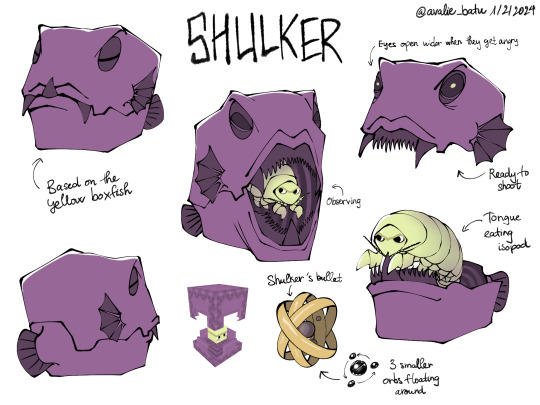
#mineblr#minecraft#gaming#indie games#minecraft art#minecraft oc#character design#speculative biology#speculative evolution#minecraft mobs#minecraft aesthetic#speculative zoology#artists on tumblr#small artist#digital artist#my art
7K notes
·
View notes
Text
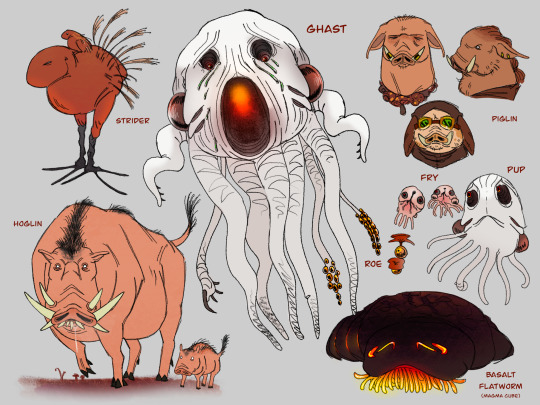
Nether life forms
(Constructs and undead not included)
#minecraft#mineblr#minecraft art#my art#minecraft fanart#minecraft nether#minecraft piglin#minecraft ghast#minecraft hoglin#minecraft magma cube#minecraft strider#worldbuilding#fantasy#speculative biology#my minecraft lore
7K notes
·
View notes
Text
GUYS
Idk if someone else has thought of this before, but hear me out on this new worldbuilding headcanon for Minecraft. Phantoms pose the same ecological role as IRL vultures. That being, they eat dead bodies. The reason a lot of them swarm (and even attack) the player when they haven't gotten sleep is because they sense lack of energy (which, for a lot of animals means death is nearby) and assume the player is either dead or dying.
#minecraft#minecraft worldbuilding#minecraft ideas#writing inspiration#speculative biology#speculative fiction#minecraft headcanons#minecraft lore#world building#mineblr#minecraft phantom#minecraft phantoms#1k notes
1K notes
·
View notes
Text

I’m going insane I want to eat it so bad
#art#my art#minecraft food#minecraft#minecraft headcanons#minecraft lore#lore#headcanons#minecraft worldbuilding#world building#worldbuilding#speculative worldbuilding#food art#food#food worldbuilding#mineblr#spec evo#spec bio#specbio#speculative biology#speculative fiction
2K notes
·
View notes
Text

spinosaurus , the king

tameable ! able to be saddled + ridden .
also a bonus sneak - peek :

#▣ ] ┅ Prehistorian#minecraft#art#blockbench#mineblr#minecraft mods#paleoart#spinosaurus#spino#dinosaurs#dinosaur#speculative biology#( for bottom one )
703 notes
·
View notes
Text
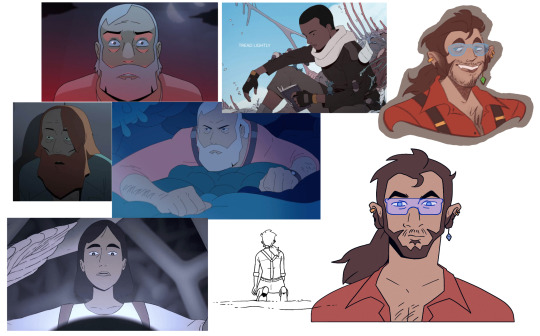
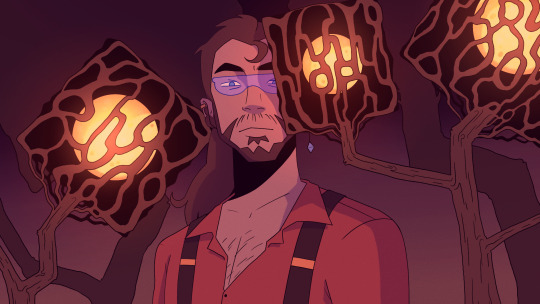

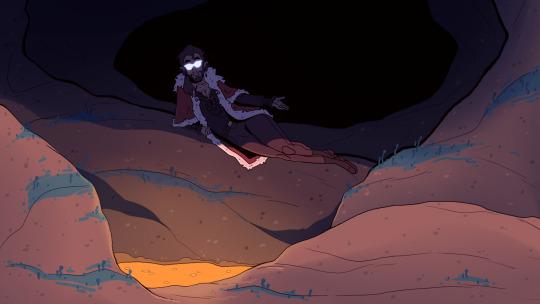
Okay so I need someone who's better at landscapes and art style replication than I am to hop on this idea. because this man and his alien planet biome and storyline were made for the scavengers reign art style fr
#atlas.art#artists on tumblr#mcyt#hermitcraft#hermitcraft 10#rendog#renthedog#scavengers reign#idea that was stuck in my head so bad I finished three full illustrations in a day#these are all screenshot redraws from the show for those who haven't seen it#you should see it by the way. literally one of the coolest pieces of art ever made and I am not exaggerating in the slightest#but yeah. he and his minecraft speculative alien biology were made for this fucking show#I'm actually really happy with how these came out it's been so long since I've tried drawing in a different art style like this
2K notes
·
View notes
Text

The creakerrrr
(signed as my main acc)
640 notes
·
View notes
Text

As an exercise in creature design and in the interest on developing my dreaming-verse/general world building lore, i thought these guys would be fun to do!
More lore / transcript:
THE STRIDER:
Peaceful lava walkers and grazers, they’re often breed and domesticated for both their use as transportation across the lava lakes and for various materials.
While not certainly an acquired taste to an overworlder, strider meat is not an uncommon food source. String and membranes from their opalescent sensory organs and hide are also valuable resources.
The membranes are heat management, courting displays, and gathering sensory input as they are near-blind.
Strider's eyes are largely vestigial, the sensory organs picking up on heat signatures exclusively.
They have spiracles for breathing along their sides and tails.
When wading through lava, their limbs are able to stretch out, this process requires the high temperature and results in the brighter, redder coloration of their skin as the heated fluids move under it. When not on lava, this fluid cools resulting in a duller coloration.
A subspecies of strider can be found in regions of the deep Neth that are blue in color.
They are long lived and migratory creatures, lichens and fungi often growing on their harder outer plates to spread across lava lakes. These are not an incident the striders, though magma barnacles, the stationary stage of a Nether-local insectoid species are considered pests.
Adolescent striders are a few meters tall, though they can grow considerably larger.
When being ridden, a lantern full of the phosphorescent warped mushrooms that Striders prefer. This lantern has the bonus effect of glowing when passing across sections of land. While Striders prefer to graze on fungi, they also spend significant amounts of time filtering minerals from the lava lakes.
Flags are displayed to help make visible where the rider and the strider are coming from and what the point of travel for the rider is.
THE GHAST:
Territorial and aggressive animals that use the updrafts of lava lakes to remain afloat in the the atriums of the Neath.
Ghats contain organs able to solidify and fire out explosive charges, when about to fire, the organ will light up, an illusion of a demonic face appearing through their spiracles and semi-transparent bodies.
They feed on minerals and airborne biological matter that filters out of the biomes in the upper-regions of the Neth with their oral arms.
The ghast tear is an organ in their center arm.
Adult ghasts release their own spores into the air to help with genetic exchange, otherwise growing young ghast on their bodies that eventually split off in a sort of mitosis.
the gelatinous bodies of ghasts are used primarily in construction and fuel, but parts of their innards, explosive organs not included, are commonly eaten.
#dreamingverse au#minecraft#world building#my art#minecraft worldbuilding#minecraft ghast#minecraft strider#speculative biology#this stuff is up to changing but I think its a good start
521 notes
·
View notes
Text
Still messing around with this model, I'm happy how the armor went out. And also here's this character I drew based on this
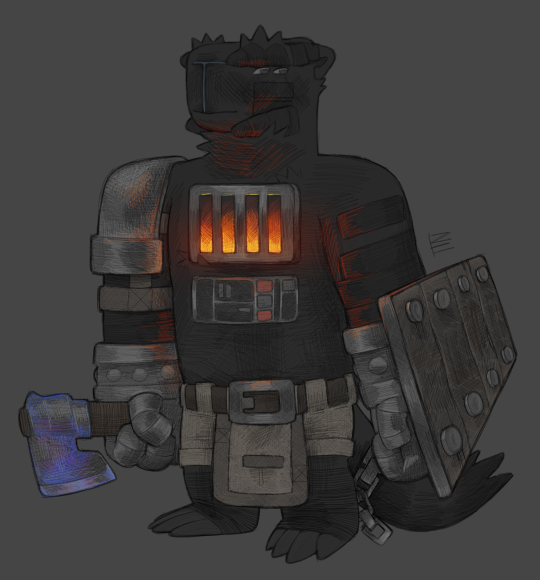
Fyi, my idea was a melanistic Tharr with a furnace inside their chest.
#myart#oc#alien#alien species#original alien species#sci fi#science fiction#fantasy#minecraft#minecraft mods#minecraft custom player model#custom player model#art#creature#creature design#speculative biology#speculative evolution#spec bio#spec evo#original species#original character
222 notes
·
View notes
Text
Suina- ‘Swine of the Nether and Overworld’

Suina— Those of the pig or pig-like grouping
The swine of the Nether and overworld are some of the most curious species seen within minecraft severs, for while the overworld pig itself is often considered with little thought or interest, their lineage has found a notable root within the Nether dimension.
Thought to either derive from a shared ancestor with the modern overworld pig or to be direct descendants from overworld pigs, the Nether piglins and hoglins are a result of prehistoric Suina being transferred from the overworld into the harsh climate of the Nether dimension. Dimensional travel is known to have occurred several times in the past either to transfer varying civilizations across dimensions to traveling of varying species, etc., allowing for a great change in the affected species when they find an environment open for colonization and adaption.
However, the history of these species, particularly of the piglin are currently clouded in mystery, as even the piglin race itself seems to be struggling to reclaim not only a damaged culture, but a species that had been plagued by a deadly disease. When first encountered, most players knew of the piglins as ‘the pigmen’ particularly as the ‘zombie pigmen’ for that was of the limited showcasing seen of this race and species for some time.
Zombie pigmen (not showcased as they are simply piglin that have fallen victim to a ‘zombie’ infection like what can be observed in the overworld, though overworld zombies are a curious endeavor in themselves and shall be discussed in the future as well as their possible lead into the hypothesis of the lost civilizations of the past) were initially noted for being tuskless, blank eyed, and for the most part, harmless unless one of their groups were attacked.
They offered what was thought to be the only evidence of an extinct swine race with ancient fortress further solidifying this lost intelligence, however, this would be proven to be false when contact was made with unaffected piglin. These piglin seem to have been either in hiding or living within underground systems, though these exact settlements have been yet to be found by or shown to players.
Either way, piglins themsleves can showcase curious variance. Piglin are noted as follows; common, brutes, and proto.
Common piglin are the most often noted piglin after the society’s re-emergence to the Nether surface, tusk shapes and tusk sizes varying from differing families and areas, fur showcasing differing colors though most commonly ranging from dark maroons to pale pinks, and all having odd pale eyes. They hold a very guarded view of their hunting or roaming grounds though they will overlook those that wear gold or can be bribed for safe passage with gold ingots (which they will readily accept for trades of any knick-knacks they may be carrying with themsleves at the time of trade). Brute piglin are the second most common piglin groups and the most deadly of this group, though they are not another species or subtype and rather are an elite class of common piglin. They often train throughout childhood to best excel at direct fighting, using axes often as their choice of weapon, often differentiated from other more casual traders or hunters or explorers due to their specialized armor and noted eye-scars. All brutes, when they’ve finished their training as brutes, will be ceremonial marked with a blade over their left eye. Brutes will be commonly found guarding fortresses believed to be either sacred areas or remnants of their race’s ancient civilization (whichever it turns out to be, all that should be noted is these areas will be defended to the death and hoard notable treasure troves within their dark armored walls).
Finally there is the tuskless piglin, or the original ‘pigmen.’ They are one of the rarest variant and unlike the brute or common, they lack tusks and often have darker eyes than the pale gazes seen on other piglins. They however, are also one of the most peaceful, seeming to be almost outcasts as they will rarely wear gold themselves and tend to be found more isolated than others in their journeying. It is thought that they are some of the last ‘pure-blooded’ piglins left, the tusked variety actually being descended from those that had been infected with the deadly disease but instead of rotting away, seemed unaffected majorly. However, their pale eyes is what gives credit to this, for only those piglin infected have pale eyes and it seems as though while the ancient disease itself has either been overcome or became unable to further infect its hosts, remainders of the causer of this disease’s DNA remains through the generations, producing these pale eyes into the modern age as a byproduct of this ancient infection.
It’s unknown why the tuskless piglin and tusked piglin refuse to interact with one another, but it may have been due to some groups hiding away from anyone of their civilization that showcases even a possibilty of being infectious and when the groups re-emerged they had unintentionally changed so greatly from one another that cultural clashes and differences prevent effective remingling.
While I could go into the possible theories into what exactly this infection was (my personal theory involves the odd fungus seen within the Nether), I will save that tangent for another time and instead bring up the other curious species of swine in the Nether: the hoglin.
Hoglin, unlike piglin, are not so much a sentient race but rather feared predators that came back around the re-emergence of the piglins. The two races have a great rivalry between them and will readily hunt the other (though young of both species will intermingle and have been seen playing with one another until encountering one of the parties pissed off parents).
Hoglins themselves rely heavily on scent and hearing for they are nearly completely blind (though it is doubted that this is because of the ancient disease that killed off a majority of the piglin race and rather a result of increased use of scent and hearing and the eyes being practically useless with heavy smoke and sulfur in the air), ramming anything they believe to be food with their massive and muscular heads to gorge them on its sharp, forward curving tusks.
They are incredible deadly and territorial and it is often a mass celebration by piglins when witnessing the death of one of these creatures. Notable elsewise is that unlike the bipedal piglin, the hoglin remains quadpedal like its kin, the overworld pig. They however have very large and spread out feet rather than the more precise footing of the overworld pig, as they travel far distances to find food and often travel harsh distances across rough terrain.
Overall, Suina are a facsianting example of how easily organisms will thrive when given an opportunity. Possibly their ancestors came from the overworld following hexapod migrations into these areas, or perhaps they were leftovers from traveling past civilizations that spawned their own development and societies.
Perhaps the fortresses and strongholds noted today aren’t even of piglin construction and could infact be evidence of the lost civilizations that fled the overworld so many millennia ago, either way, the more we look into these races and species, the more opportunity we have to learn about the past of these varying dimensions.
#my art#traditional art#minecraft#minecraft speculative biology#speculative biology#minecraft mobs#piglin#pigmen#hoglin#minecraft pig#minecraft biology#My deisgns
107 notes
·
View notes
Text
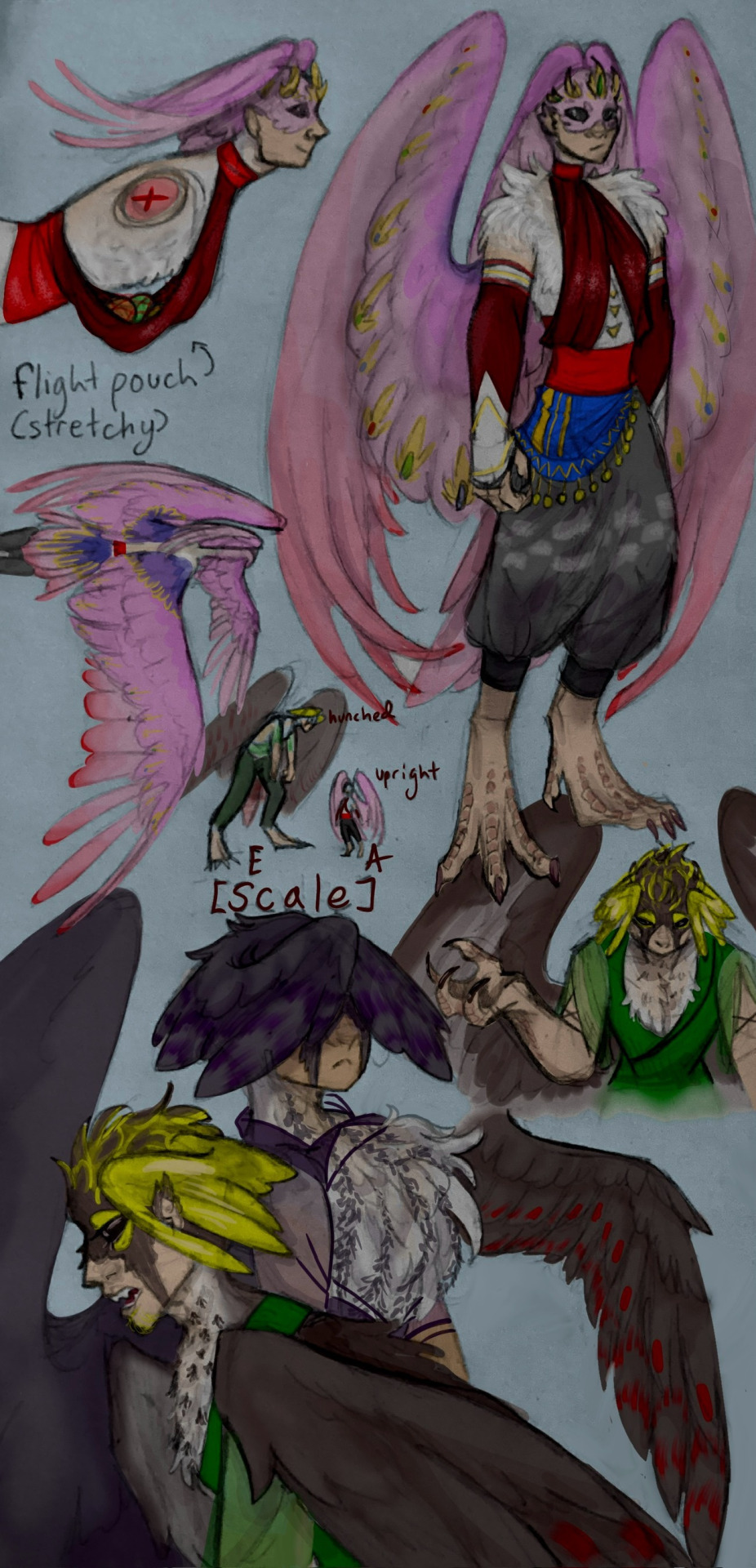
My fic based on the Eleonora's falcon's whumpy hunting strategies is here! Summary:
For generations, a certain population of Eleonora’s Falcons have been observed learning to capture smaller birds by shredding their wings and trapping them in rocky crevices to have fresh food available later. In the Avian tongue, Eleonora translates to Elytrian. In the Avian brain, Elytrian translates to nightmare. But while Avian Techno is dreading the moment he’s turned into lunch, Elytrian Philza hasn’t slept in three days trying to take care of his newborn. When the line between chick and chick food starts to blur, how will predator and prey handle it?
Design details below cut :) featuring lots of speculative biology and culture based on real birds.
General
Both species don't have feathers around their mouth for hygiene.
Evolutionary, they follow the
Their teeth are convergent evolution. They are not the same as mammal teeth.
We are ignoring the fact their flat faces are not the most aerodynamic.
Head wings are to increase mobility and the face aerodynamic problem. Somewhat similar to dragonflies where they have a lot more aerial precision, but doesn't allow them to hover.
Languages are grouped by Order. Some portions are instinctual, others are learned.
Avians
Avians are passarines. There are multiple species of Avian. Technoblade is based on colorful songbirds, but doesn't have a specific source.
Omnivores. Diet includes fruit, nuts, fish, insects, grains. Become more herbivores during migration because they can store long term.
Technoblade's feathers mimic the spears of a crown, with his back similar to cTechno's blue cape. His shoulders are very fluffy to mimic the fur of cTechno's hood, and because it's winter.
Evolved for long distance migration across the ocean. Their arms were primarily an adaptation for holding supplies during migration, but have found new purposes with the invention of society.
Because of their long head wings, Avians can't wear typical shirts. They also don't have a concept of chest modesty. The halter top is a way to carry more supplies while flying, and has a net interior. The sleeves are to keep their arms warm during migration. (and to mimic ctechno skin).
The long head wings make them incredibly agile in flight. Combined with their incredible endurance, if they can survive the initial attack they tend to do well.
Walk more upright than Elytrians since they don't have to counterbalance the same magnitude of wing.
Like to wear shiny stuff like gold.
Baggy drop pants to trap heat and because they don't tend to walk too much.
Can sleep with only one half of their brain while migrating so they're able to keep going.
Good mimicking abilities.
Elytrians
Elytrians are falconiformes.
Elytrians don't typically do the de-winging thing, it is a learned behavior within Philza's area (much like Eleonora's falcon). They find arms very useful for tearing while clutching the prey in their feet talons.
Nearly exclusively carnivorous.
Elytrians live further south of Techno's species, and migrate about a month after they've passed through.
Their general diet does not typically consist of Avians but instead other birds, or terrestrial prey like deer or smaller. They only eat Avians during migration/hatching season, targeting exhausted migrators.
The main hunting strategy is divebombing at incredible speeds. If they miss, they might pursue it little bit, but have a lower success rate.
As such, they have small head wings to avoid getting in the way of aerodynamics.
Small head wings also mean they can have more of a shirt! Tend to have sleeves, and don't cover up the chest because there's lots of fluffy feathers there, particularly in females. They don't have boobs. They're birds. That's. That's not how that works.
Females are larger.
Giant talons for ripping and shredding.
I uh did read articles about the Cretaceous–Paleogene mass extinction and stuff about gigantification and what not, but I think I'll stop myself before pontificating about the oxygen ratio in the atmosphere and potential gravity differences.......
#speculative biology#ouughhdghh#only thing my degree is useful for#dsmp#mcyt#sbi#sleepy bois inc#dark sbi#philza#technoblade#kristin#kristin minecraft#emerald duo#technoblade fanart#techno fanart#philza fanart#kristin fanart#mumza fanart#osmp#avian techno#elytrian#avian#wing au#sbi au#sbi fic#dark sbi fic#technoblade fic#techno fic#philza fic#wings
115 notes
·
View notes
Text
Warden species

#mineblr#minecraft#minecraft build#gaming#indie games#minecraft art#minecraft oc#character design#character art#speculative zoology#speculative biology#speculative evolution#speculative fiction#creature#creature design#digital artist#artists on tumblr#my art#my ocs#warden minecraft#minecraft warden#minecraft mobs#horror#small artist#pixel art
4K notes
·
View notes
Text
Alright I NEED to know the biology lore of how can ghasts live in what is basically a fire dimension with no water, that probably smells like toxic as heck (because of all the combustion), and that is basically a big cave that probably makes it a giant furnace. Heck, even the implications of how the player can stand it either.
Because if that thing thrives on water it must be a water/air amphibian (y'know, instead of land), or be able to survive with mostly carbon (because the nether is in constant combustion, there must be oxygen as well as a shit ton of CO2).
Along with the amphibian speculation some ppl think it may have slimy/soft skin, but we have seen ghasts swimming in lava or under lava waterfalls, so there must be some draconic features like hard scales that cover it up, like the lava snail could he need lots of iron or use it somewhere on its body? But also we know the nether probably has little to no iron, it's mostly gold, and quartz, but maybe, similar to mars, all the iron is found in netherrack (because of its reddish color).
So maybe it was a creature that lived close to volcanic places on the over world? Both in high places and underwater, to explain his ability to fly.
Do you think it started out as a small cephalopod that had a really light body? Or even a jellyfish?
Like, imagine if that skin was more like a jellyfish's bell, and somehow it has a high body temperature by itself, so when getting out of the water they naturally float like hot-air balloons.
So, maybe they don't live that deep underwater, or slowly evolved to live in less pressurized environments until they escaped water.
Considering they have both eyes on front and also a mouth there too, they may be closer to octopus than squids, and look more like the martians in the war of the worlds book. But not that ugly.
Maybe the ghast is a giant octopus that is horizontal like a cuttlefish. And what if it also lost the ability to camouflage? And that's why they're pale white, my headcanon is that they're actually transparentish in the way polar bear fur is transparent. And high temperature environments made them lose their color changing skills because their skin had a higher priority of becoming harder?
Along with the volcanic thing maybe they can stand the nether because they need lots of minerals to thrive? And the nether is basically an infinite cave. Now I need to know how pressurized is the deep ocean and also if the nether has a high or low pressure too, and if that's the case how could a ghast withstand the shift from there to floating in the over world?
Of the ghast was or used to be an over world creature how did the interdimentional migration work? Were they brought there because of commerce? As transportation? (In the Minecraft movie we see the piglins using it to fly), if they are highly adapted to the nether that means they must have been there for a long time, but also we know nether portals are made by intelligent creatures like us or the piglins, so it could have happened more than 50,000 years ago or even a million if that's the case, since homo erectus or before?, or are there rare instances of natural portals occurring?
What of the ghast is like those creatures that live exclusively on a specific part or island on earth and can't be found anywhere else? And a natural portal occurred and then a constant swapping led them to getting trapped there or something forced them to, like a predator? Although I don't think the over world has anything that Could be threatening to them, not even the warden since they can fly.
Or maybe they ARE nether creatures, and the ancient nether was way different, maybe even colder, and more humid. We know we can't place water there, but we can have cauldrons, also, the presence of life and fungi there must be a sign that there must be a kind of humidity somehow, maybe not water by now, maybe a different liquid.
AAAAAAAAAAAAAAAAAAAAAAAAAAAAAAAAA there's so many interesting stuff to speculate about this creature and maybe I'm going a bit too nerdly but that new addition alone was THAT good to the game, can't wait to befriend a ghast myself.
#ghast#Minecraft#ghastling#minecraft live#minecraft live 2025#the nether#biology#worldbuilding#speculative biology#fantasy#science fiction#sci fi
54 notes
·
View notes